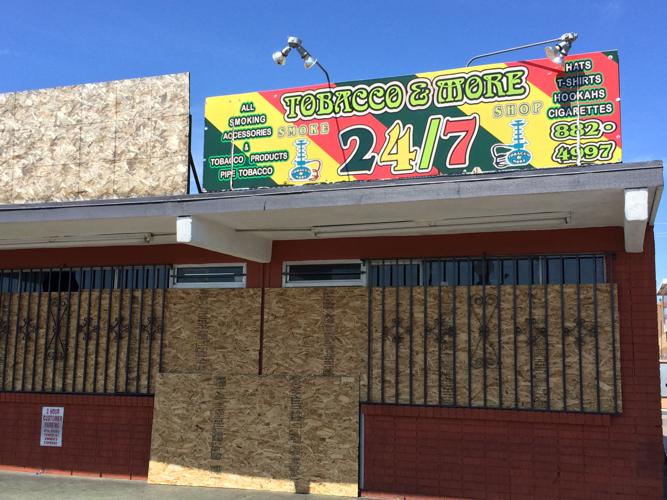Years ago they created Spice as a legal way to get high, an alternative to pot that you could buy at smoke shops.
The sales of this cheap, synthetic cannabinoid — also known as K2 and by other names — spiked in Tucson, causing havoc in some parks and neighborhoods. In these unfortunate spots, you can see Spice “zombies” tilting unconsciously around, sometimes falling to the ground.
Now, the local government wants to make Spice illegal — that is, even more illegal than it already is under state and federal law. The Tucson City Council is discussing at Wednesday’s study session the idea of a new city code banning sale of these substances.
At the same time, the voters of Arizona are considering whether to make using marijuana legal for any adult over 21, not just for those with medical reasons. We’ll vote on that initiative in the November general election.
The coincidence of one movement toward prohibition and a simultaneous movement toward legalization raises big, confusing questions. The way we answer them could affect our neighborhoods, our families and our state in profound ways.
Here are a couple: Can you mix legalization and prohibition policies successfully? Will improved consumer education make the use of legalized drugs more tolerable?
What’s unusual about the Spice situation is that it is arguably a result of marijuana prohibition — and now we’re trying to prohibit it. I’ve talked to users in central Tucson, and many say they turned to it because it was a cheap, legally available high when pot wasn’t readily available, or cheap.
Over years, first the federal government and then the state government banned the compounds that are the active ingredient in the drug, but the makers, many of them overseas, simply tweaked the formula to turn their product into arguably legal “incense” bearing the wink-wink warning: “Not for human consumption.”
Now, City Council members Steve Kozachik, Richard Fimbres and Regina Romero are exploring the possibility of this new ordinance.
“The main problem with Spice/K2 — the synthetic cannabinoids — is not necessarily the psychoactive ingredients, it’s the additives people are putting in,” Kozachik said. “To the extent they’re sold with additives, the person using it has no clue what it’s being cut with.”
It’s true — users have told me they don’t necessarily know how a package of Spice will affect them until they use it. And consumer education is one of the arguments of the pro-legalization side of our societal debate. But Kozachik’s not arguing for improved labeling. He’s arguing for a citywide ban.
I spoke Tuesday with Roger Roffman, a professor emeritus of social work at the University of Washington in Seattle, who wrote the book “Marijuana Nation: One Man’s Chronicle of America Getting High from America to Vietnam.” He is pro-legalization but recognizes that marijuana poses real risks for some segments of the population who should be warned.
“One of the benefits of legalization will be, hopefully, more accurate consumer education put out there by public health officials,” he said. “Under regulation with the state of Washington as an example, the (marijuana) package labeling gives a good deal of information as to what’s in the package.”
That’s in a state that has legalized marijuana, of course. The same is not true of synthetic drugs, Roffman noted.
“I want consumers of synthetic marijuana to be informed that this is a dangerous class of substances to be using,” he said.
Overall, he said, the idea should be: “Start with good labeling, then add to that consumer-oriented education about how to use the substance.”
It’s an idea that Demitri Downing, a Tucsonan who organized Arizona’s Marijuana Industry Trade Association, explained simply: “The concept of prohibition in and of itself is a dysfunctional model. What we need to be doing is educating, teaching good decisions, teaching moderation.”
But Sheila Polk, the Yavapai County Attorney and leader of the anti-marijuana legalization campaign, made a worthwhile point on this education issue. In Colorado, where marijuana has been legal the longest, people often misuse the edible products made from its active ingredient. There are cookies and candies made of the stuff, and people often eat too much — not surprising considering that they are sweets.
And those selling drugs, legalized or not, are always trying to expand their markets to make more money, she said. With legalization, you can expect more use and more harms resulting.
Of course, misuse seems to go hand in hand with consuming mind-altering substances, whether they’re legal or illegal. I’ve heard that occasionally people drink too much alcohol, for example.
So perhaps we can live within a mixed legal framework of prohibited and legalized substances — we already do, after all, when you take tobacco and alcohol into account. And maybe the best idea is not just educating consumers, but squashing those vendors who sell adulterated products or won’t reveal what they’re selling in the first place.
If you can create a minor social crisis by retail sales of a substance marked “Not for human consumption,” then the problem is that government isn’t doing its job.





